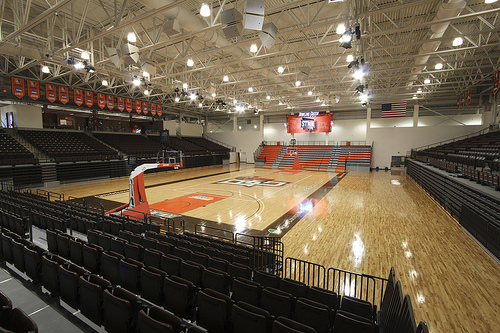Published on
Using Sports To Close The Accessibility Gap

I was asked the question, “how do athletics programs increase accessibility to higher education?”
It made me both contemplative and reflective. As someone that had the hopes and dreams of playing collegiate athletics (dream unfulfilled), and who has a child in the throes of recruiting, and having worked as an academic counselor for student athletes at a community college… I do have a perspective on this.
Recently, the Kentucky Wildcats won the NCAA Men’s Basketball Championship. They did this with a number of freshman (including the Player of the Year Anthony Davis) who are all expected to declare for the NBA draft, get a nice hefty paycheck, and move on to the rest of their lives. There are a large number of juniors that play NCAA football that count the days down to go to the NFL draft and then there are the enormous numbers of student athletes that can’t stay academically eligible and drift away out of the spotlight into a different light than that which was promised to them. The debates rage on regarding whether college athletes should be paid, or how long should they stay in school… but the question I was asked was much simpler- it was about access. Specifically, does college athletics increase the golden ticket to college, fraternity parties, all night study sessions… my answer is a resounding…maybe?
Looking directly at the question, the answer is, of course, yes. Title IX increased access for women to collegiate sports and the notion of a college scholarship is a tremendous lure. My daughter is a high school volleyball player and I would love for her to get a college athletic scholarship much like many parents out there wish for their children. But my reasons are, I suspect, a little different.
I want my daughter to get a college scholarship because most schools get priority enrollment for classes (preventing the 6 year undergraduate experience), have a cadre of intelligent tutors at the ready, have study areas that have computers and support and… there are people assigned to ensure my child doesn’t slip through the cracks. My daughter plays volleyball. Unless there is a monumental shift in sporting interest, I don’t expect she will rely on volleyball as her source of income. So, parents of kids (or kids) looking for tuition support of kids that play volleyball, swimming, soccer, softball, crew and other non-revenue generating sports…the idea of a college scholarship is a great add-on.
But this question I was asked has a socio-economic undertone. It hints at the great question of race in sports and in college. When we look at the big dogs in the kennel, Men’s Basketball and Football…access is a different question. Superstar basketball players need to stay eligible until March…six months…one semester…and they can move on and try for their shot in the NBA or overseas. Judging on the number of “one and done” kids that stay one year and leave, I would argue that athletics does not increase accessibility to higher education. It is solely another hoop to jump through. A lot of people blame the Kentucky coach, John Calipari for taking advantage of this rule…for recruiting kids that he knows will only be there for one year and leave. HE, they say, is exploiting kids from underrepresented backgrounds. What HE is doing, is playing by the rules and winning.
I am a huge supporter of college athletics. But the problem doesn’t reside in college sports programs solely. People like to blame Pete Carroll and John Calipari but forget that there are companies that rank 8th graders in basketball (I have heard there is a national ranking of 4th graders for basketball but haven’t found it). There are high school teachers that cower to the pressure from the high school coaches… “GET THIS KID ELIGIBLE…” they hear. I have spoken to countless high school teachers that get pressure and are told that the teachers are standing in the way of the dreams. Many teachers stand their ground but enough change their perspective, change the grade, pass the student and send another unprepared kid to college…to fail.
When I was recruited to run the academic side of the Athletic Department at a community college, I told the Athletic Director that I would do it if I had full support. EVERY kid got tested academically and had to follow my plan. I understood that as long as I kept students unit count to under 12 units per semester, their eligibility clock wouldn’t start. I can’t tell you, because I don’t have the records, but the vast majority of kids that came to the community college because of academic eligibility issues tested at about a 6th grade education in both Math and English.
You see, the problem with access for student athletes isn’t simple. The problem is that there are sociological and psychological…cognitive and emotional barriers out there. The problem is that we can get kids in to college but our concern shouldn’t be getting them in to college. Our concern should be ensuring they have the skills to complete college. Food for thought- at your high school, did they have a map each Spring displayed that showed flags signifying college acceptance? Most schools do. I have argued for years, and hopefully this medium will get some more buy-in, that we need to have those maps but right below it, or next to it, should be the map showing the class 4 years earlier…who graduated from college? THAT is impressive to me.
Author Perspective: Educator

